Guide: How to Write a Press Release for Your Business
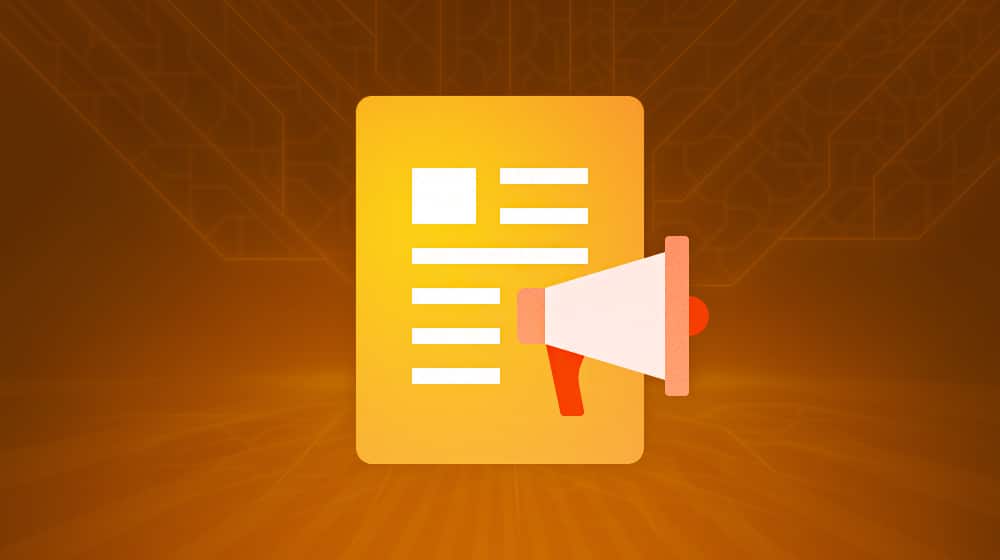
Press releases are tricky. On the one hand, they can be a useful tool for spreading the word about something important to your business. A good press release, picked up by the media and turned into a trending story, can net you a surge of traffic and interest that rivals the best of viral content.
On the other hand, press releases are hard to do properly and easy to do poorly. Thousands of businesses write garbage-tier press releases and spam the inboxes of every journalist and industry website they can find, and entire lists of press release aggregators besides. They get no traction, they have no SEO value, and they can even turn the attention of journalists away from you if you waste their time.
If you're committed to writing a press release, this guide will help you write it the correct way.
Let's get started!
Understanding the Press Release
The first thing you need to do is understand how a press release functions, what it is, and more importantly, what it isn't.
A press release is a small, bite-sized document. It's a release of information about something you have done that is newsworthy, to the press. Hence the name.
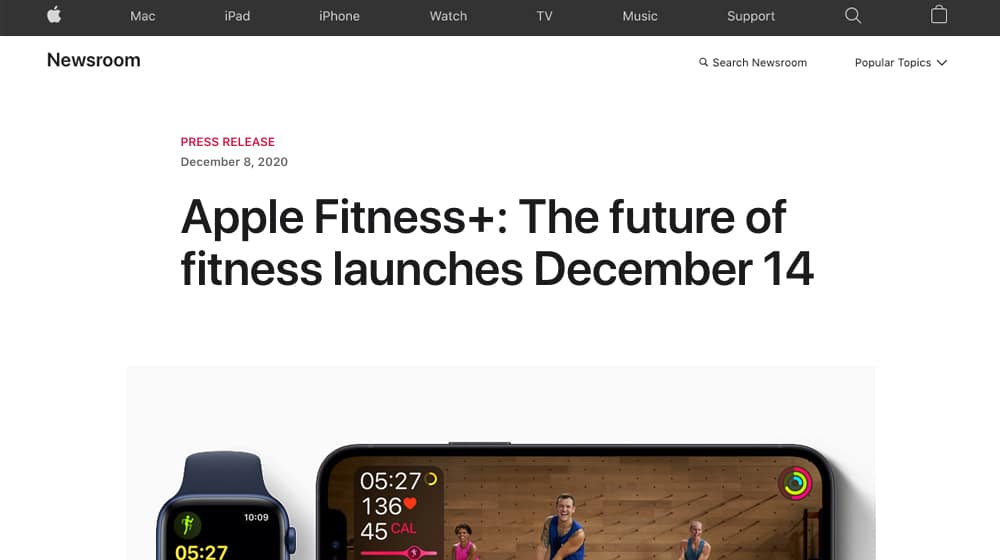
A press release is not:
- A blog post. It is much too short and with too little information to make a good piece of stand-alone content.
- A landing page. Press releases are meant to give a lead to journalists who can then dig deeper to cover the story. It's not for sales or a call to action.
- An embellishment. Press releases are factual. They're also publicly visible. If you're fluffing yourself up with it, people who know better can point it out, and you'll get press, just not the beneficial kind.
Remember that you're meant to be sending press releases to journalists, not to the public. The journalist can then take the information in the release, synthesize it with other publicly available information, come to you for more information if necessary, and write their post about the subject.
Determining the Purpose of Your Press Release
The first step to writing a good press release is determining the purpose of the press release. All press releases have a similar format and requirements, but take slightly different forms as you write them. Purposes include things like:
- Announcing a new product launch.
- Announcing a merger or acquisition.
- Releasing an update or new version for a product.
- Promoting an upcoming event hosted or sponsored by your business.
- Announcing a grand opening for a new branch or business.
- Announcing a rebranding.
- Announcing new job openings, especially in the executive team.
- Announcing having won an award.
- Discussing and addressing common problems or issues with a product.
- Getting ahead of or dealing with an impending crisis.
All of these have one thing in common: they consist of a piece of information that is important enough that you want to promote it, and that you think the media will be interested in.
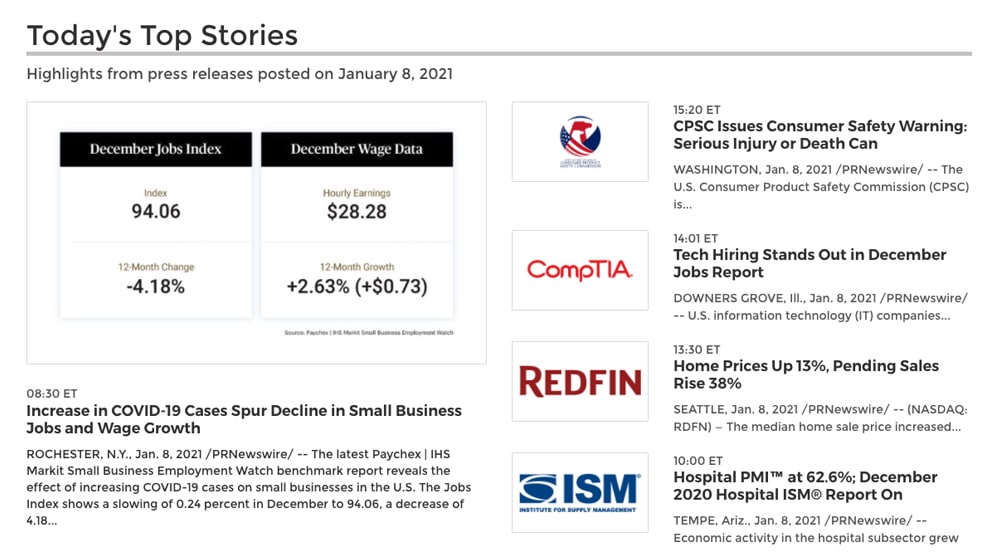
Some are positive, like a new product announcement from a large company like Apple. Some are neutral, like a job opening. Some are negative, like a crisis.
They all have the same goal: to spread information as far and as quickly as possible.
Common Press Release Requirements
The specific requirements for what should and shouldn't be included in a press release vary by organization. Different news agencies and journalists have different standards and formats, so I highly recommend looking into them directly to see what they ask for.
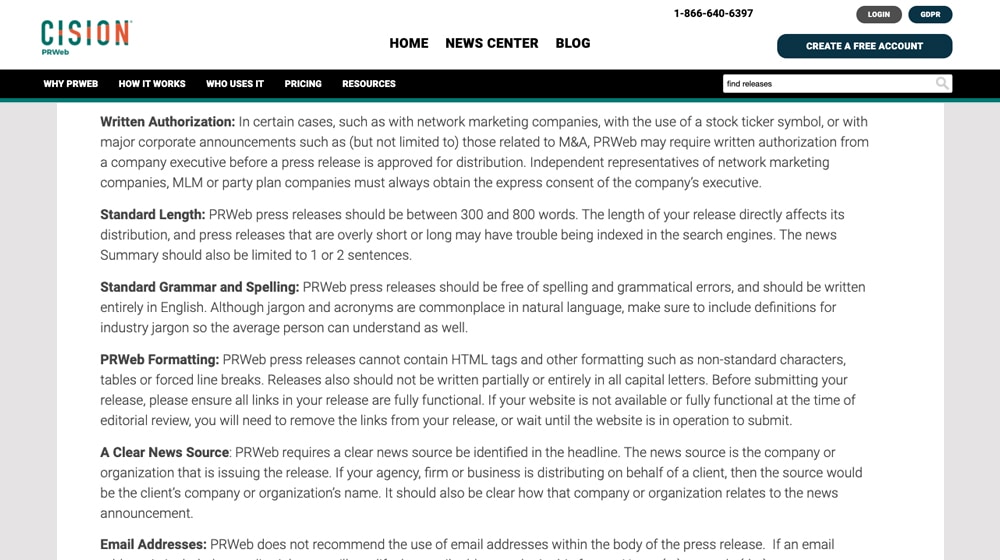
In general, though, a press release should have the following:
- A title and subtitle that explains the core concept of the news you're promoting.
- A location for the news. This is the most relevant location, such as the location of a venue for an event, or the location of your company headquarters.
- Body copy. A press release should be no more than one page of copy for most releases, ordered with the most important information at the top. Don't bury the lede.
- A bulleted list with important facts or statistics, as necessary.
- Contact information and links to resources so an interested journalist has easy access to learn more.
- Your boilerplate: the paragraph of who you are and what you do.
Some press release tips also recommend starting the whole thing with "FOR IMMEDIATE RELEASE" and ending it with ###. These are hold-overs from when messages were sent via telegraph and when press releases had dates of release.
These days neither is usually an important factor in your press release, so it's up to you if you want to include them.
Tips for Developing a Good Press Release
So, how do you make a good press release?
1. First and foremost, make sure your topic is legitimately newsworthy. Your core information needs to have an immediate impact and be newsworthy in some way. For example, if Apple were to release a press release saying "Yup, we're still Apple, just thought you should know", that would be a meaningless release. However, if they published one saying "the new AirPods will be $5,000 and only come with one; you need to buy the other separately", that would be newsworthy information that the media would be interested in.
One way many smaller companies do this is with newsjacking. Monitor the ongoing local, national, global, industrial, or niche news, and look for subjects where your expertise or information is relevant. Come up with a way to add your two cents, and write a press release around it.
2. Think about some kind of emotional resonance to your press release. How should this information make someone feel? Write with that in mind.
3. Make sure to send your press release to specific and targeted media outlets, and potentially even specific journalists. Broad-spectrum PR aggregators aren't worth the cost of the electricity that hosts them. You want to aim for journalists who are interested in or connected to your business, who write for publications that have an interest in your brand or subject.
4. The best tip here is to think like a journalist. Journalists are busy people with a ton of pitches in their inbox; what are they looking for to stand out? They want something easy, upfront, and resonant. They don't want to dig for information, they aren't going to write about something not newsworthy, and they don't want their time wasted.
Next, let's get into some examples to help you write and format your own release.
Examples and Templates for Press Releases
I'm not a huge fan of press releases, so I don't have a lot of my own to show off. I can, however, provide one basic template, and links to others. First, the template:
FOR IMMEDIATE RELEASE
YOUR ATTENTION-GRABBING HEADLINE HERE
A Smaller, Longer Lede to Gather Attention and Explain More Here.
Bulleted List with Important Facts to Summarize Your Release
Date, City, State, and other Location Information
Body Copy Paragraph 1
Relevant Quote Journalists Can Use
Body Copy Paragraph 2
Body Copy Paragraph 3
Relevant Quote to Lead Out On
Contact Information for Journalists to Learn More
Company Boilerplate Information
###
See? Not very difficult. Different people use different combinations of body copy, quotes, and bullets. Some people put the boilerplate above the contact info or put the contact info at the top. It's all up to you and the requirements of the media outlets you're sending it to.
If you want some more specific templates, here are several sets you can browse through.
- Several templates and examples from Hubspot
- 7 templates and 21 real-world examples analyzed by CoSchedule
- 13 Press Release Templates from Prowly
A simple Google search will find you hundreds more, too. Trust me, there's no lack of templates available for something as old as press releases.
Benefits and Use Cases for Press Releases
Knowing how to make a press release is important, sure, but it's also important to know why to use a press release. Frankly, in my experience, most businesses use them wrong.
The important part of press releases is media consciousness. A steady stream of press releases – monthly, quarterly, or what have you – establishes a media awareness of your brand. When you have something noteworthy to announce, whether it's quarterly profits or new product launches, you send a press release out to the media and hope some of them pick up the story.
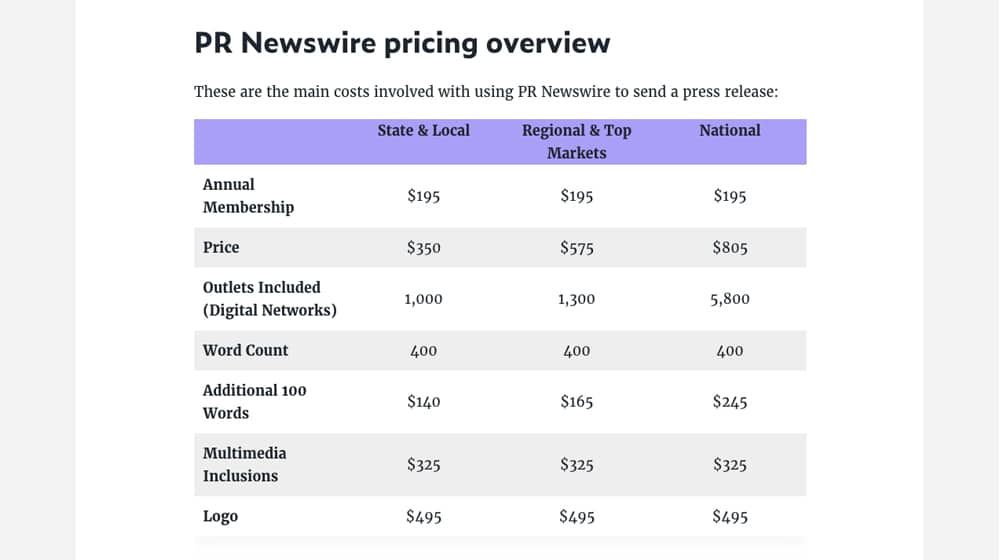
You're at an advantage here, because there are a lot of news agencies out there like, say, HuffPo, that publish immense numbers of articles every day. They have entire groups of staff journalists dedicated to following up on basic tips and releases to write what amounts to filler content.
The downside is that all of these news outlets? They likely have hundreds of not thousands of emails every day with press releases, tips, and potential content. Many of them can still afford to be picky, even when publishing dozens of news articles per day.
The two ways I've seen press releases used successfully by smaller and mid-sized businesses are:
- One, publishing press releases in a dedicated news category on your site. This gives you fine control over what you write and allows you to link to other resources like press kits, larger posts on the subject, and landing pages.
- Two, submitting your press release to carefully-chosen, targeted news agencies. Picking specific news agencies in your niche and your geographic area is the important part. You want smaller-scale media that is more likely to pick up your story, and which can spiral into larger organizations mining the smaller organizations for media ideas.
You can follow this up with promotion on your social media feeds, but you don't usually want to repeatedly promote your press release; rather, you want to promote the stories written about you because of the press release.
The other reason to use a press release with a broad-spectrum release is damage control. If a crisis springs up about your company, a press release can be a useful way to get your side of the story out as quickly as possible. Of course, it's better to avoid the crisis in the first place.
How Not to Use a Press Release
To be honest, I feel like press releases in 2021 and beyond are mostly just the jurisdiction of large companies whose every move has far-reaching impacts on the stock market. Tesla can put out a press release and it affects the money of millions of people. I put out a press release and the only one whose money is affected is me.
The biggest issue with press releases is that far too many businesses think that they can just submit their press releases to PR aggregators and call it a day. Sure, you can submit a press release to distribution sites, but you have two major drawbacks to doing so.
1. You're paying for it. And it's expensive, for what you get out of it. You can get much more traffic and more leads using that same budget for some paid ads or promoted social media posts.
2. Who is actually reading these PR sites? A few journalists, maybe, but most of their audience is people there to submit press releases. A large portion of the rest of it is people like me, writing posts about press releases and looking over what's currently out there. 99% of those press releases end up published on those aggregators, and maybe syndicated across some other aggregators, and that's it. There's no real media coverage. No one follows a site like PR Newswire for their news when they can follow Bloomberg, Reuters, Forbes, the Wall Street Journal, the Washington Post… you get the idea.
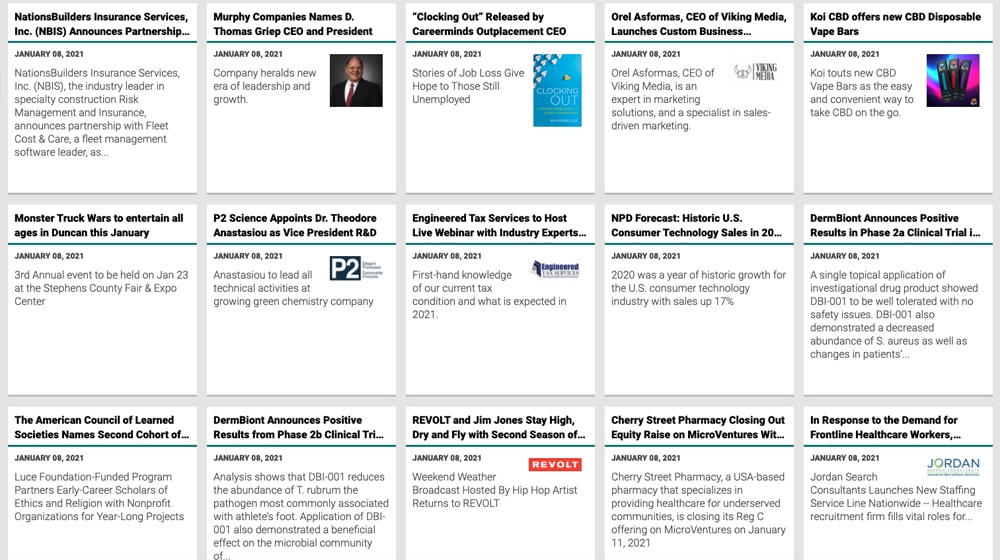
A lot of articles written by companies like Hubspot and CognitiveSEO talk about the SEO value of a press release, and you know what?
I don't believe them.
Yes, a press release can generate SEO value, if the media picks up the story and links to you from their reporting. They do not generate SEO value on their own. It's just like any other kind of user-generated content. Even if large sites do pick it up, they're posted to the classifieds section which has hidden nofollow and noindex tags to strip any authority away from your links.
All the way back in 2013, Matt Cutts announced that press releases themselves have no SEO value. More recently, in 2018, John Mueller said in a video that Google ignores links in press releases. They won't penalize you, but they won't help you at all, either.
Press releases are entirely an intermediary tool, not a source of value in and of themselves. They're also very easy to ignore, especially when you're a journalist receiving hundreds of spammy press releases a day.
Frankly, I believe it's much better to form a more natural relationship with specific journalists and give them tips when you want a story written about you. You can bolster this with coverage via a system like Help A Reporter Out. We wrote a guide on this subject here.
Press releases, though? Don't bother, unless you're a company like Apple. It's just not worth the investment.
What are your thoughts on press releases? This guide is about how to write a press release, but as you could tell, I'm not a fan of them for marketing purposes. If you disagree with me, agree with me, or if you have any questions about press releases, please feel free to leave a comment! I respond to all comments and would love to hear from you.










January 13, 2021
Couldn't agree more! if you are a big player, then absolutely, it will be a big help. However, for small businesses like mine, I don't think it's pratical. I rather spend my money on blogs or paid ads and social.
January 14, 2021
Hey Christopher!
Glad I'm not alone in thinking this.
I've wasted thousands on press releases over the past decade and they've gotten me nowhere.
Thanks for chiming in 🙂
June 30, 2021
Good stuff, now I'll sit and hope it gets approved
June 30, 2021
Hery Mary, good luck! I'm sure it will.